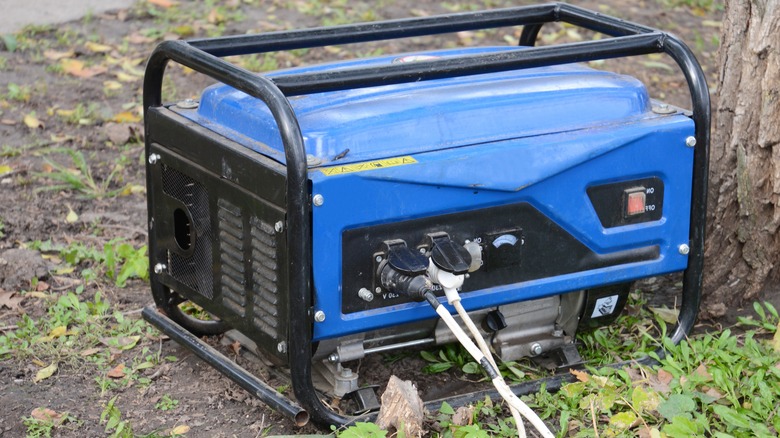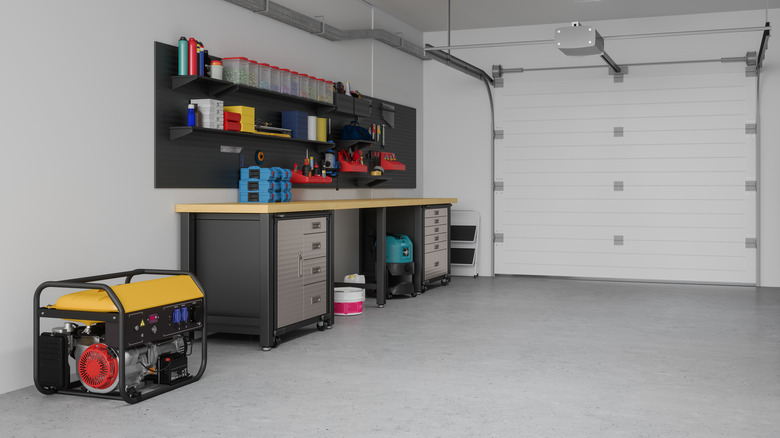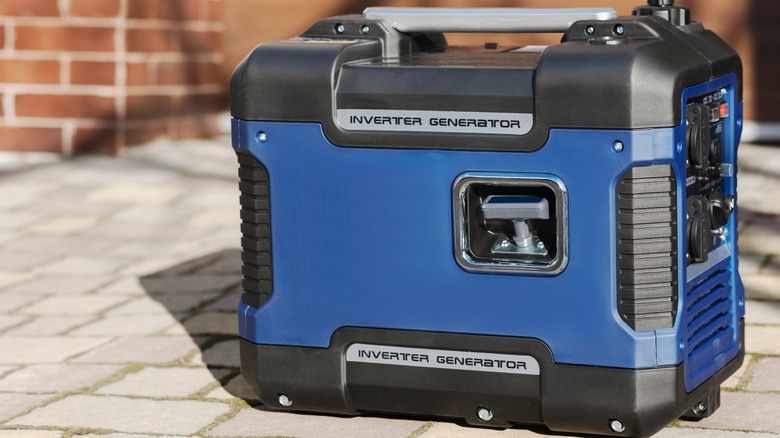The Do's & Don'ts Of Using A Generator To Stay Safe This Hurricane Season
Hurricane season is upon us. As the National Oceanic and Atmospheric Administration (NOAA) predicts an above-average amount of storms for 2024, it's important to be prepared for power outages this summer. Specifically, the agency expects there will be between 17 to 25 storms with winds blowing 39 mph or higher, 4 to 7 of which will likely turn into hurricanes. These winds can knock down power grids and leave entire towns without electricity for days. To avoid sitting in a house without light or refrigeration, prepare for severe summer storms by investing in a high-quality generator. However, to ensure you stay safe while operating it, we contacted an expert to see what they had to say about using one safely.
The first thing to consider is what kind of generator best fits your household's needs. "Consider whether a portable or standby generator makes the most sense for your needs," Dan Mock, VP of Operations at Mister Sparky, a leading electrical service provider, exclusively told House Digest. "Portable ones are used to power smaller areas or appliances while standby generators can power an entire home." Buying one that's too small can overload the generator, so Mock recommends reaching out to a local electrician to help assess the situation. Along with the problems of overloading, you'll also need to consider where your generator is placed, who has access to it, and what you're plugging into it — let's get into the do's and don'ts of using a generator at home.
The 'dont's' of generator safety
If you're getting your first generator, knowing how to safely use the appliance can be tricky. The first "don't" of generator safety is running it inside your house. You always want the generator located outside, in a dry area, and protected from the elements. "Never operate it from inside your home. Without proper ventilation, carbon monoxide poisoning can occur and put you and your family at risk," Mock warned in an exclusive interview with House Digest. According to the U.S. Consumer Product Safety Commission, one portable generator creates as much carbon monoxide as 400 cars. Because of this, it's important to run it outside and not in an enclosed space.
The second "don't" is for plugging in appliances without double-checking how much wattage your particular machine can handle. "Avoid overloading it by keeping to the wattage capacity, which you can find in the manual," Mock shares. To figure out how many watts you will need to run your home, you can use free online calculators, like the one from Electric Generators Direct. You can also calculate it yourself by deciding which devices you want to plug in and then adding the running wattage with the starting wattage of each device to determine how much energy each item will pull. The running watts are how much power it takes to keep the device running, while the starting watts are how much power it takes to turn it on.
The 'do's' of generator safety
Now that you know which common mistakes to avoid with your home generator, let's look at some "do's." To keep your household safe, the first "do" is to ensure no one is near it while running it. "Keep kids and pets away while in use," Mock exclusively tells House Digest. This ensures they won't be at risk for potential dangers such as carbon monoxide poisoning from the machine's running engine, burns, or unexpected electric shocks. However, your family members aren't the only precaution. To keep your house safe, you want to be careful where you position the generator. "Provide five feet of clearance on all sides to avoid fire hazards," Mock explains. You also want to use an electrical cord specifically made for outdoor use. This will ensure that a shortage or fire won't start if the cord becomes wet from the outside elements.
When it's time to turn on the generator, give it some time to warm up. "Run the generator for a few minutes before plugging appliances or devices into it," the expert warns. Failing to do so can create a surge, which can damage both the plugged-in appliances and the generator itself. Once you have given it enough time to power up, take your time turning on appliances and lights, prioritizing those you need the most. Turning everything on at once can overload your generator.


